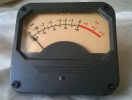slimefuzz
Inspired
I setup a synth drone for testing, adjusted internal levels so output 1 is at about -1dB,
Out 1 is set to +4dbU and out1 EQ is flat, including level at center 0.
Setup DAW project to record output 1, but the maximum level shown is -12dB.
Tested with Cakewalk and Studio one to make sure it's not a daw issue.
Projects are setup 24 bit, 48kHz to match FM9 output.
Windows 11, with FM9 audio level set to 100%.
Any tips welcome...
Out 1 is set to +4dbU and out1 EQ is flat, including level at center 0.
Setup DAW project to record output 1, but the maximum level shown is -12dB.
Tested with Cakewalk and Studio one to make sure it's not a daw issue.
Projects are setup 24 bit, 48kHz to match FM9 output.
Windows 11, with FM9 audio level set to 100%.
Any tips welcome...

